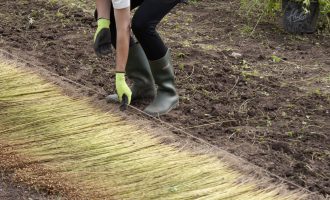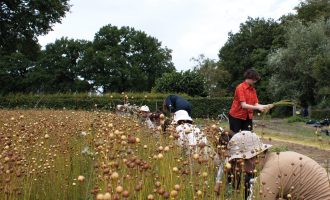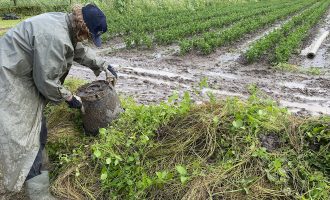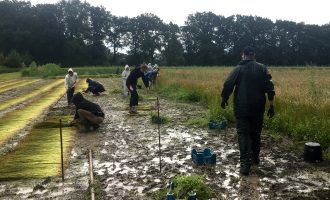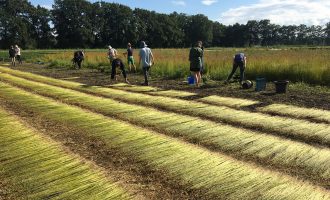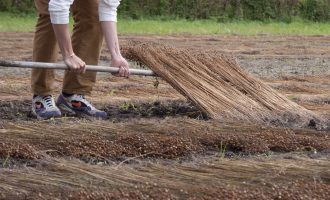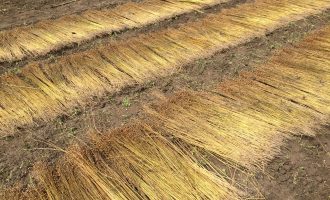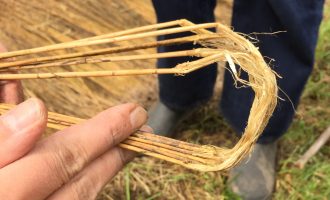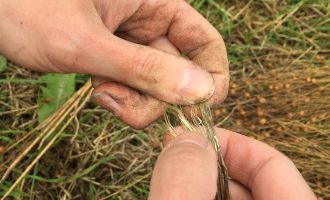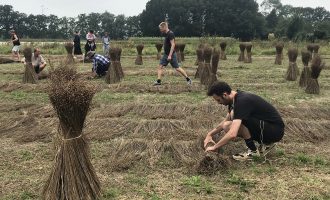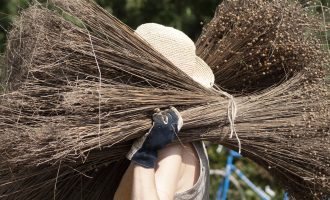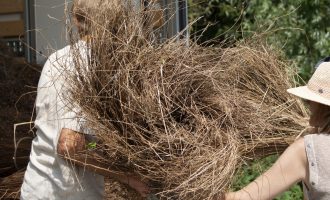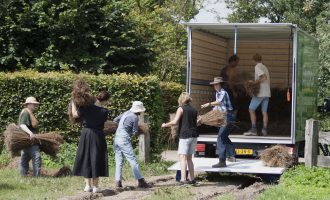flax harvest, shared stewardship 2021, ekoboerderij de lingehof, hemmen
The flax harvest can be divided into three phases, starting with pulling the flax from the soil, roots and all. This is followed by the crucial retting process, and finally the bundling of the flax into sheaves. Falling in the summer months, the Linen Stewards approached the manual harvest tasks with respect for the needs of the flax and fibre, the challenges of unpredictable and weather-dependent processes, as well as their own energy and curiosity.
-
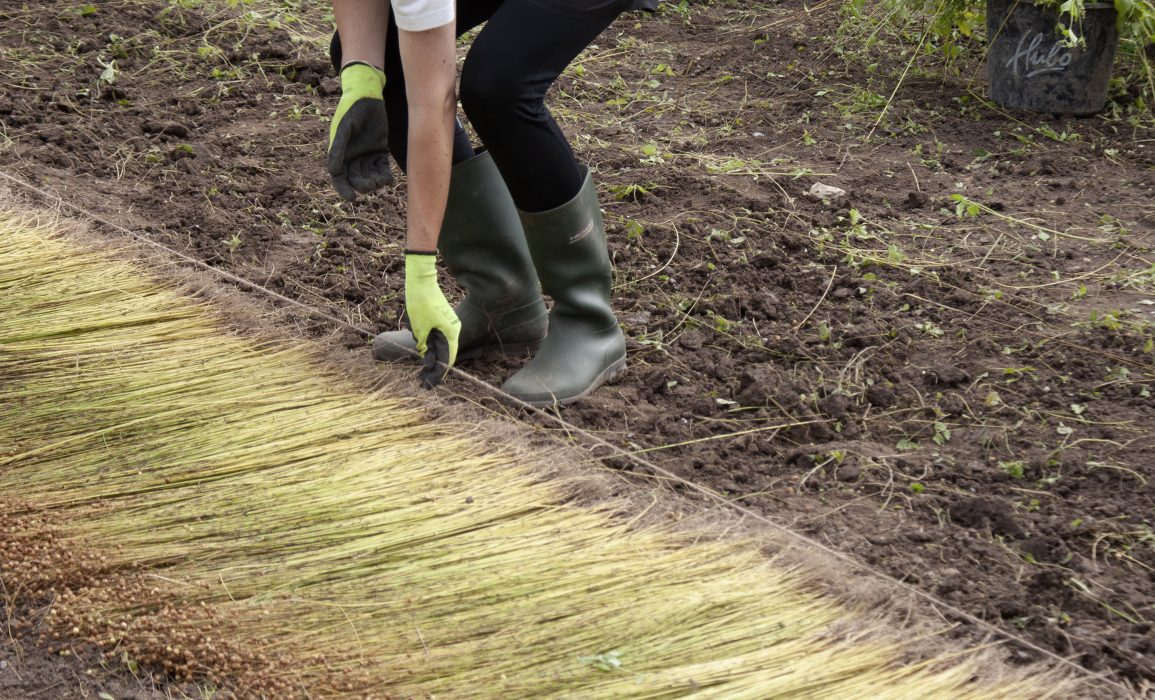
pulling the flax – day 100
Exactly 100 days after the flax seeds were sown, the Linen Stewards began their harvest by pulling the flax and laying it down on the cleared field in even rows, in preparation for dew retting.
-
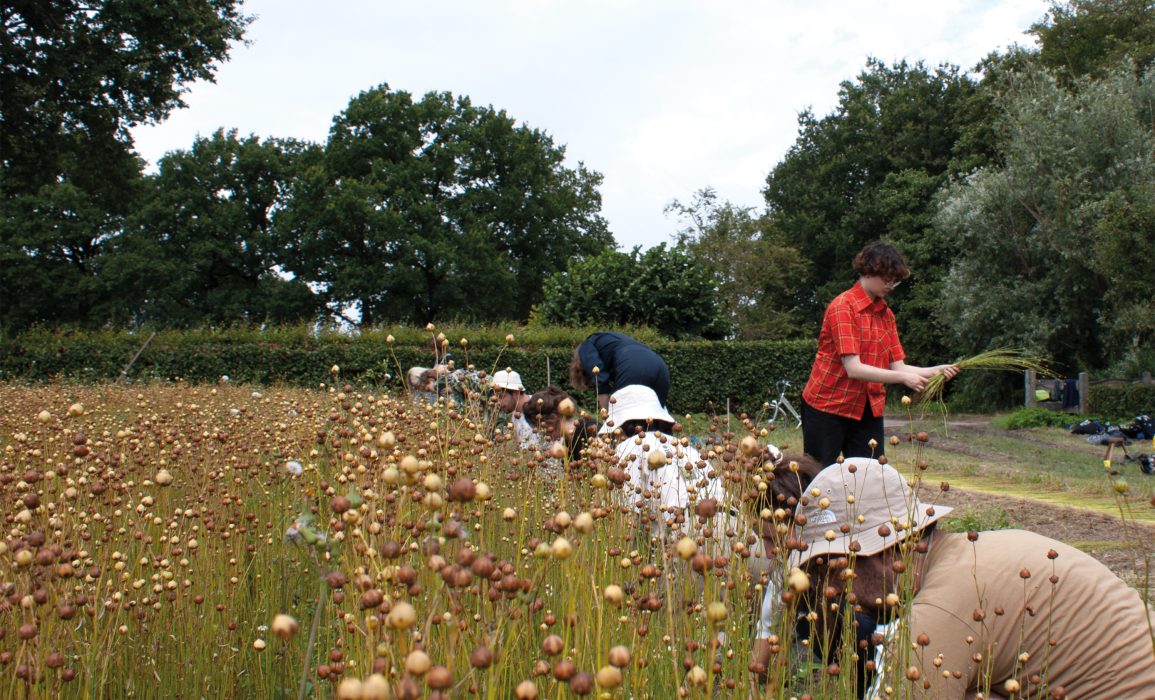
labour, leisure and community
Done manually, this first step of the flax harvest requires the most hands. It was a lively get-together, getting to know one another and gaining experience of the flax harvesting processes, sharing tasks, exchanging ideas and even singing along the way.
-
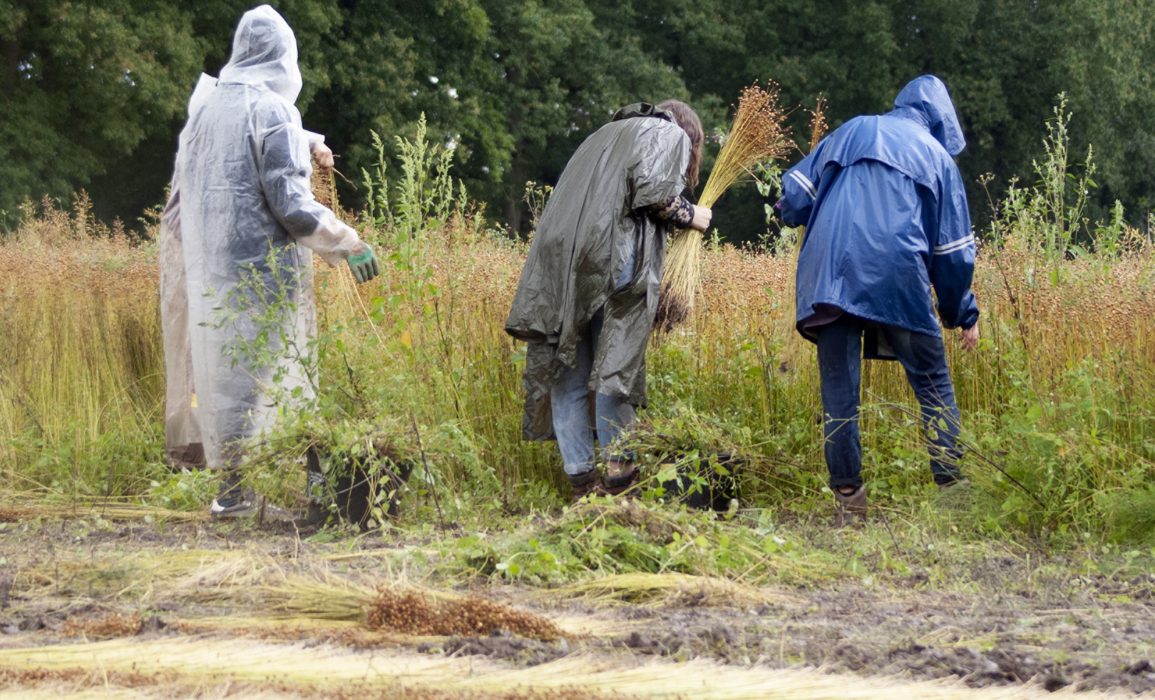
clearing weeds during the flax harvest
Abundant rainfall brought lush growing conditions for all flora on the field this year. Although the Linen Stewards tended the field to the best of their ability early in the season, ‘extra’ plant growth thrived amongst the flax rows, adding intensive weed-clearing to the harvest tasks. The group found rhythms between the necessary actions on the field, supporting each other in getting the flax laid out for retting.
-
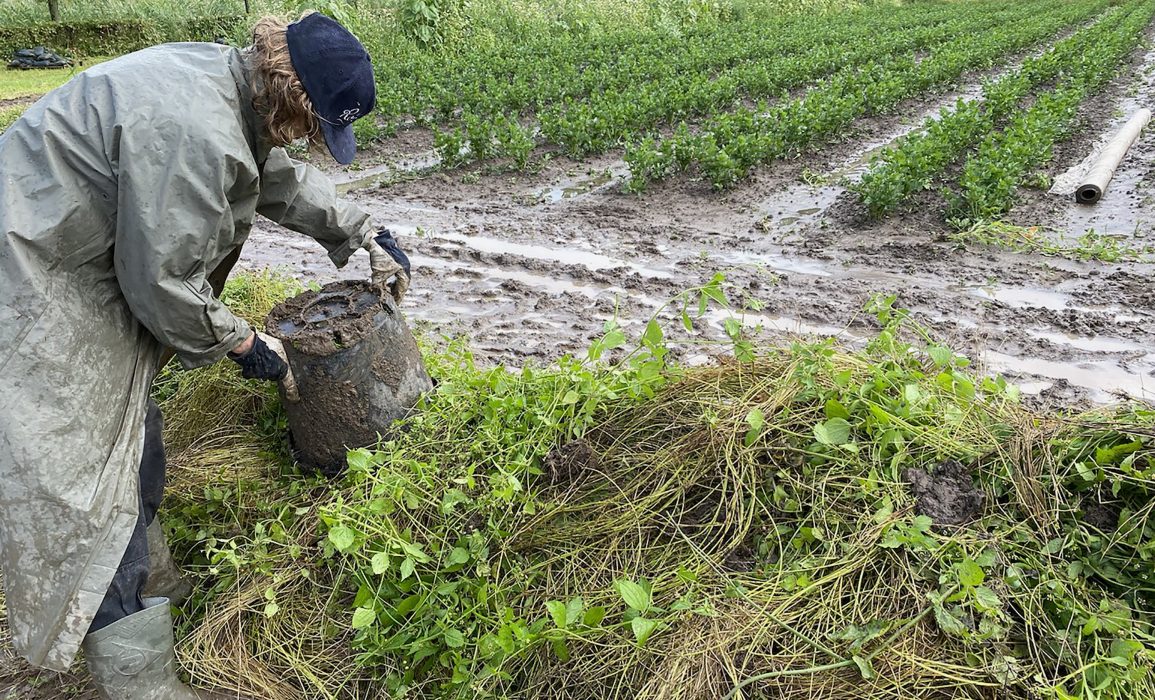
returning plant matter to soil
Some of the flax that collapsed in the late spring storms did not recover and had started to break down prematurely, damaging the fibre. The Linen Stewards deposited all unsalvageable plant matter under the surrounding hedgerows so that it could return to the soil. The unstable climate conditions that the Linen Stewards encountered on their field of less than half a hectare also had a significant impact for experienced commercial flax growers in the Benelux region. Photo by Joan den Exter.
-
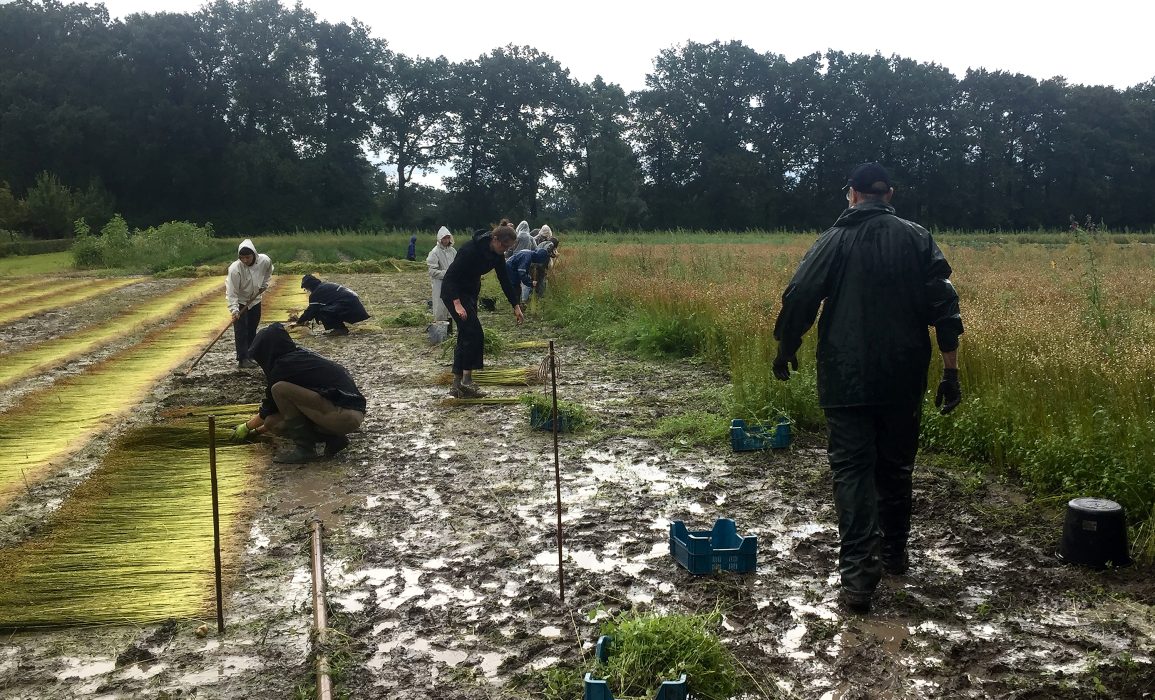
rained out – day 101
This year's wet summer made timing days for the harvest activities even more of a challenge. While the rain didn't dampen our spirits, it could impact the harvest outcome: laying the flax on the wet, muddy ground, with puddles forming, would result in the fibre rotting rather than retting. Even after consulting weather forecasts, unexpected summer downpours eventually brought the Linen Stewards second harvest day to an early halt.
-
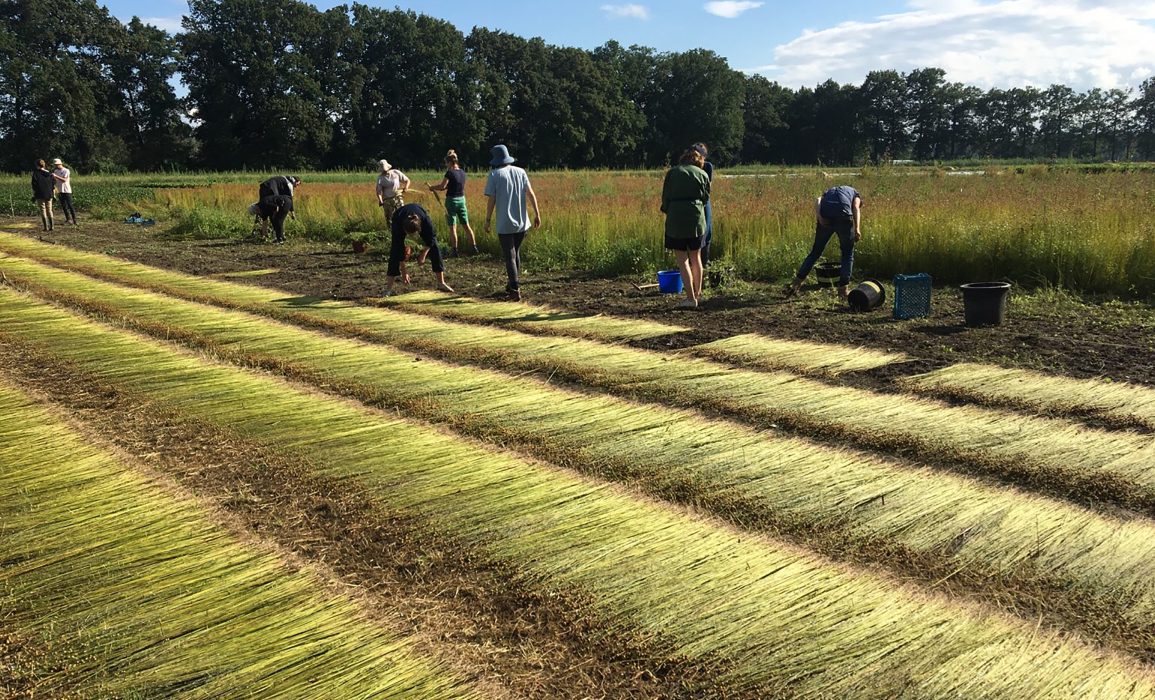
pulling together – day 103 to 105
Keen to see the first stage of the harvest through to completion, available stewards, friends and family contributed their time and energy to continue the necessary activities in the thankfully dry days following. Getting the flax onto the field within the shortest time frame increases the chance of an even retting process and fibre result. Photo by Alicia Minnaard.
-
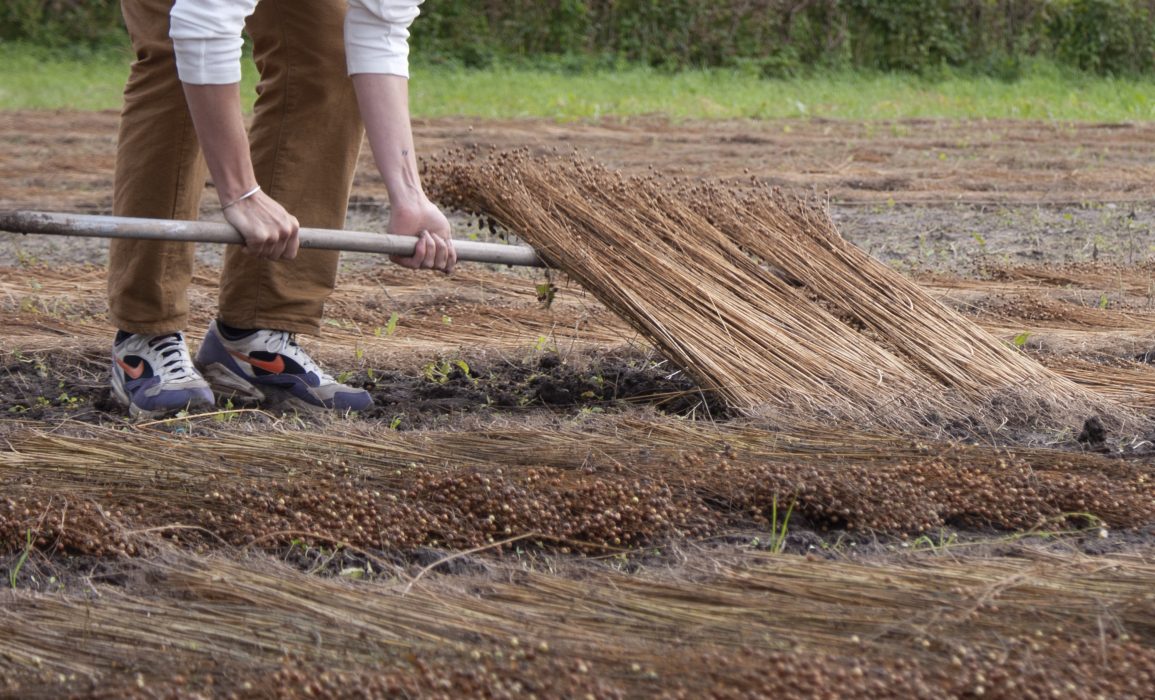
turning the flax – day 107
A handful of stewards returned to check the retting progress and turn the flax. Flipping the flax over encourages through and through exposure to the elements. The timing depends on the weather, generally a week or two after the harvest. Straight spread rows make turning simple using a staff or broomstick, manoeuvring between wind gusts. The sound of rustling seedpods provided a satisfying soundtrack.
-
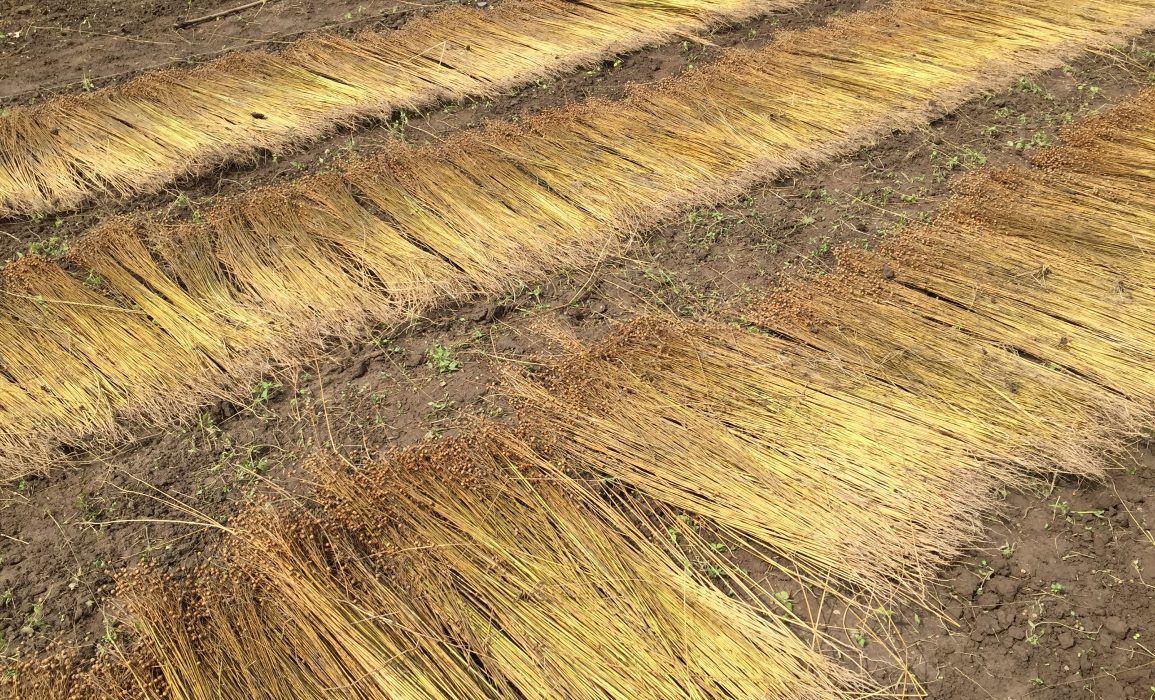
dew retting flax – day 107
The flax remains laid out on the field to be exposed to heat, wind and moisture during the ‘dew retting’ process. Several days after pulling, the flax on the surface had started to colour golden brown. After turning the flax rows, the lighter yellowing underside of the flax spread is exposed to weather, allowing the stems to evenly break down.
-
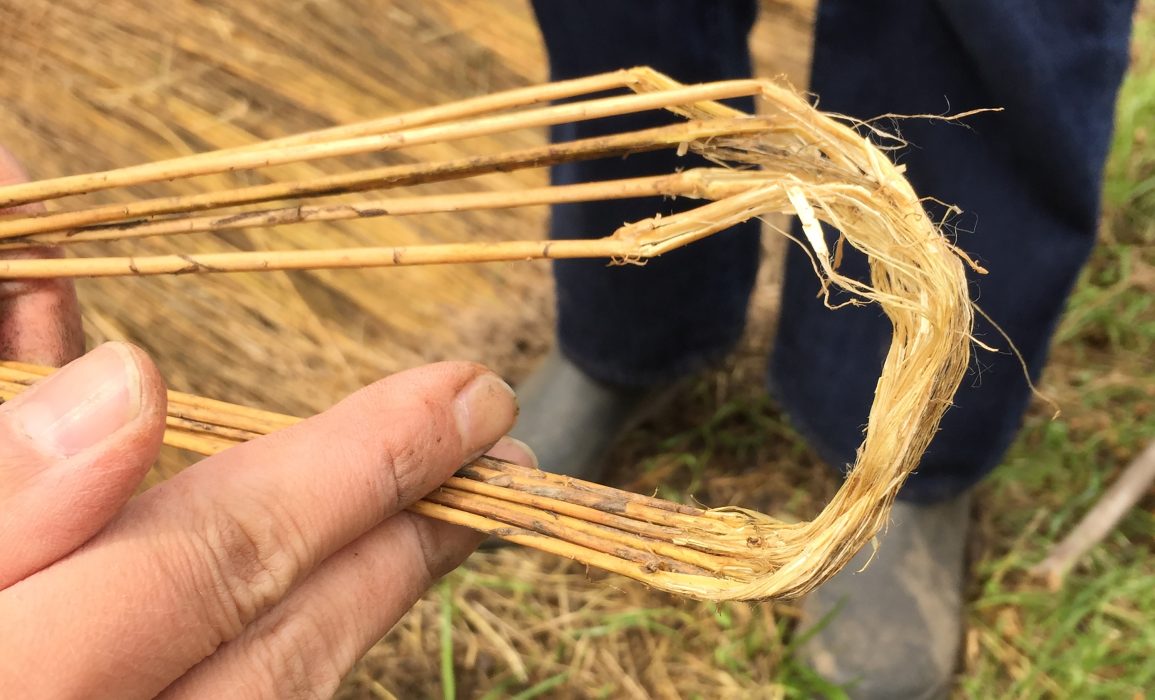
checking the fibre – day 107
The Linen Stewards eagerly checked the progress of the flax varieties when turning the flax. At this point, it was clear that the majority of the harvest was not yet ready – the fibres being a golden colour, and still tacky when twisted – but the flax was retting. A slight difference was observed between the six varieties, in part due to the time span between the first and final days of pulling.
-
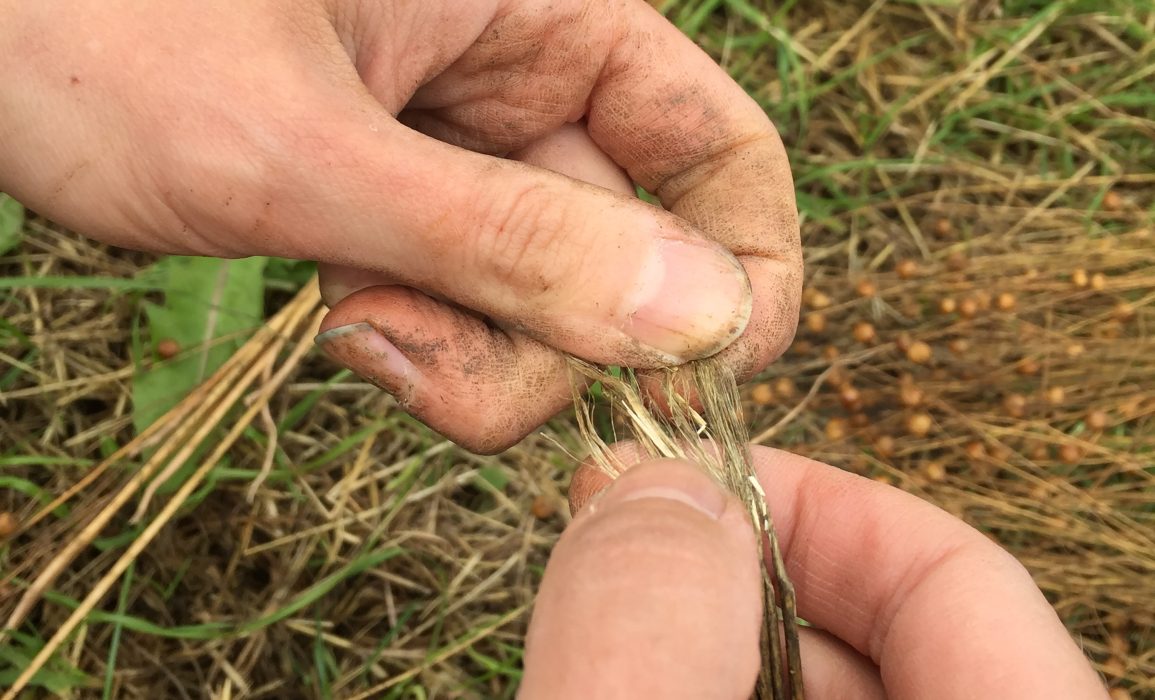
retted flax fibre – day 107
The earliest pulled flax, exposed to more rain (and sun), was nearing the desired grey colour and fibrous texture. If ready before the rest, this could be baled up and left on the field in sheaves. A couple of stewards committed to checking the field in the coming days, to determine when the harvest would be brought in and to monitor any necessary action for the different varieties.
-
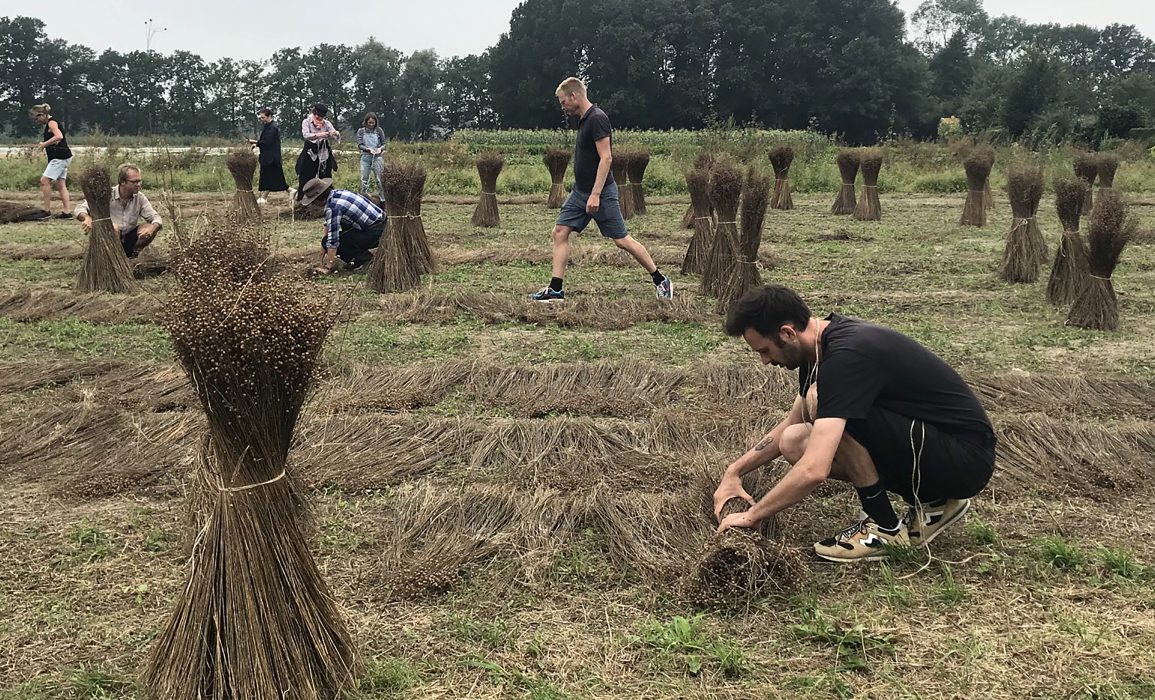
bringing in the flax – day 117
Just over a week later, in mid-August, the flax was considered to be sufficiently retted. Answering the call, available Linen Stewards came together on the field on the next dry day to bring it in. First, the flax was lifted from the soil, allowing the underside to air, before being rolled into sheaves for storage.
-
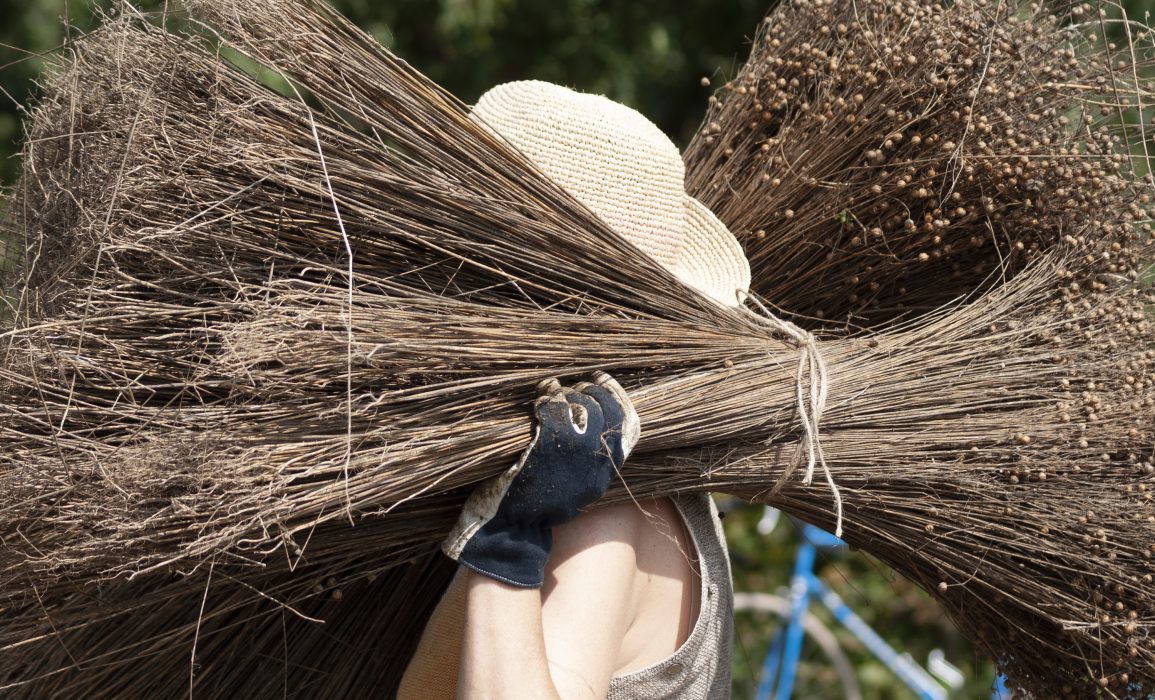
a human scale
Considering the traditional actions involved in handling the flax being based on a human scale – a footstep, spread two-knuckles deep, an arm’s reach – the resulting sheaves of retted flax were similarly easy to carry off the field.
-
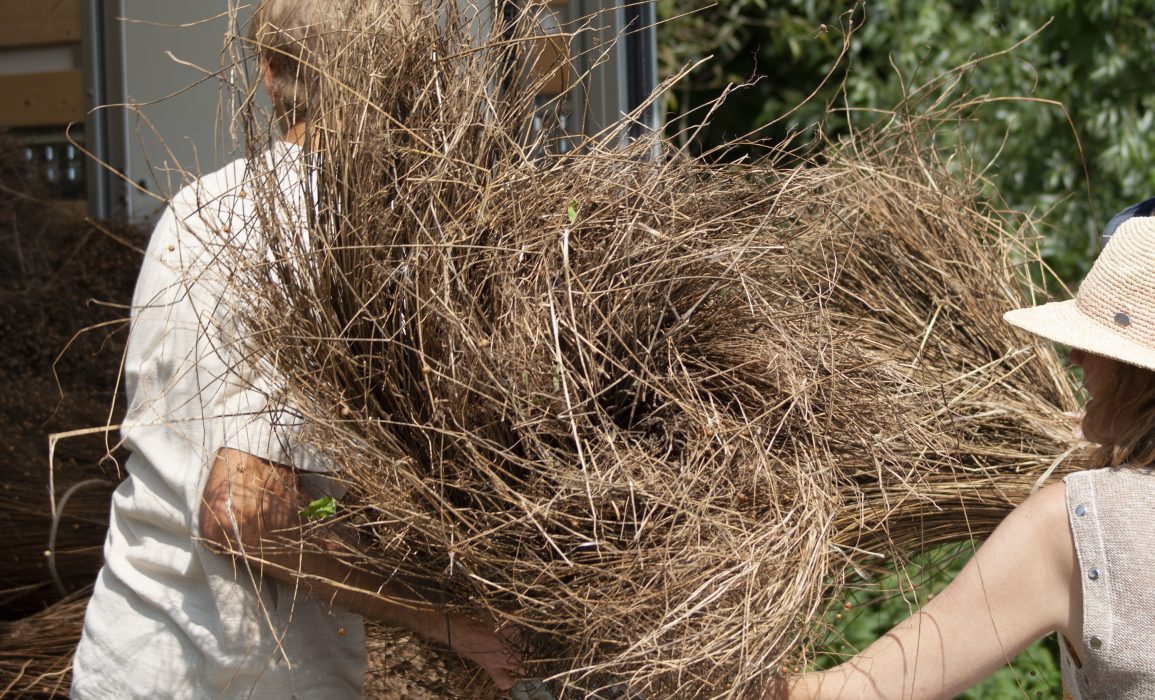
salvaged bent flax
During the harvest, the Linen Stewards encountered sections of fallen flax on the field from the spring storms. The still-intact stems, although quite bent, were laid out separately next to the straight spread rows for retting. These sheaves have their own distinct character and will require different handling.
-
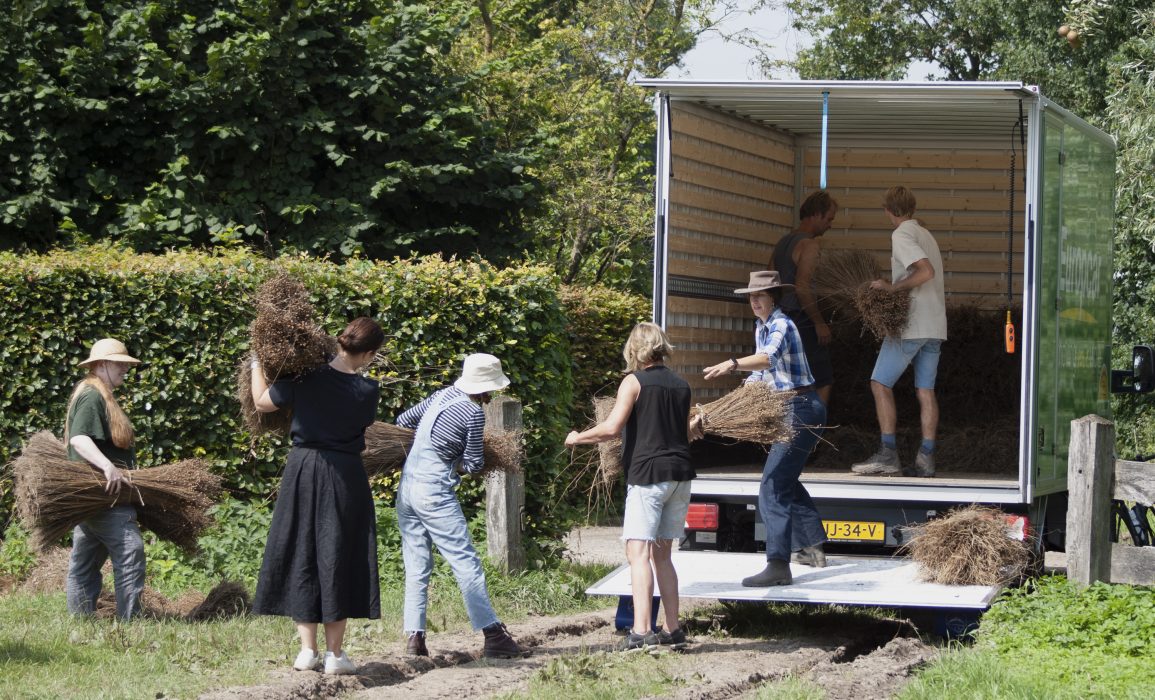
destination flax shed
Working together with enthusiastic energy, the flax was soon loaded into the waiting van, sorted per variety. With the field cleared and the flax ready to be transported to the Linen Stewards’ flax shed, the harvest is complete.
